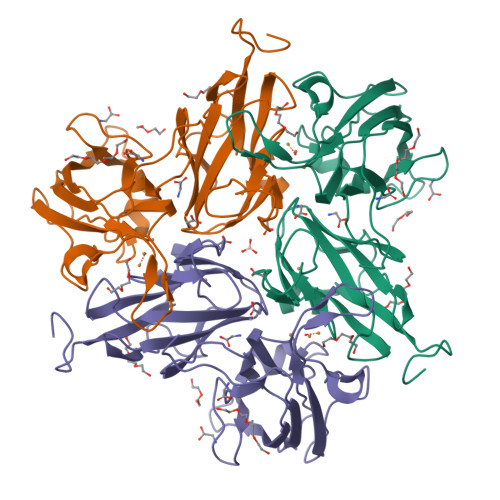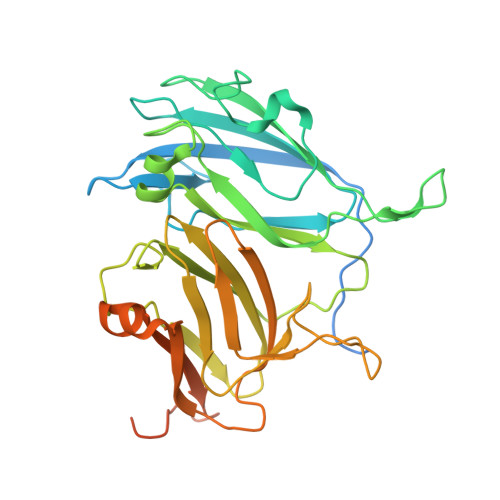Increasing Reduction Potentials of Type 1 Copper Center and Catalytic Efficiency of Small Laccase from Streptomyces coelicolor through Secondary Coordination Sphere Mutations.
Wang, J.X., Vilbert, A.C., Cui, C., Mirts, E.N., Williams, L.H., Kim, W., Jessie Zhang, Y., Lu, Y.(2023) Angew Chem Int Ed Engl 62: e202314019-e202314019
- PubMed: 37926680
- DOI: https://doi.org/10.1002/anie.202314019
- Primary Citation of Related Structures:
8U8P, 8U8Q, 8U8R, 8U8S, 8U8T - PubMed Abstract:
The key to type 1 copper (T1Cu) function lies in the fine tuning of the Cu II/I reduction potential (E°' T1Cu ) to match those of its redox partners, enabling efficient electron transfer in a wide range of biological systems. While the secondary coordination sphere (SCS) effects have been used to tune E°' T1Cu in azurin over a wide range, these principles are yet to be generalized to other T1Cu-containing proteins to tune catalytic properties. To this end, we have examined the effects of Y229F, V290N and S292F mutations around the T1Cu of small laccase (SLAC) from Streptomyces coelicolor to match the high E°' T1Cu of fungal laccases. Using ultraviolet-visible absorption and electron paramagnetic resonance spectroscopies, together with X-ray crystallography and redox titrations, we have probed the influence of SCS mutations on the T1Cu and corresponding E°' T1Cu . While minimal and small E°' T1Cu increases are observed in Y229F- and S292F-SLAC, the V290N mutant exhibits a major E°' T1Cu increase. Moreover, the influence of these mutations on E°' T1Cu is additive, culminating in a triple mutant Y229F/V290N/S292F-SLAC with the highest E°' T1Cu of 556 mV vs. SHE reported to date. Further activity assays indicate that all mutants retain oxygen reduction reaction activity, and display improved catalytic efficiencies (k cat /K M ) relative to WT-SLAC.
Organizational Affiliation:
Department of Chemistry, The University of Texas at Austin, 105 East 24th Street, Austin, TX 78712, USA.























